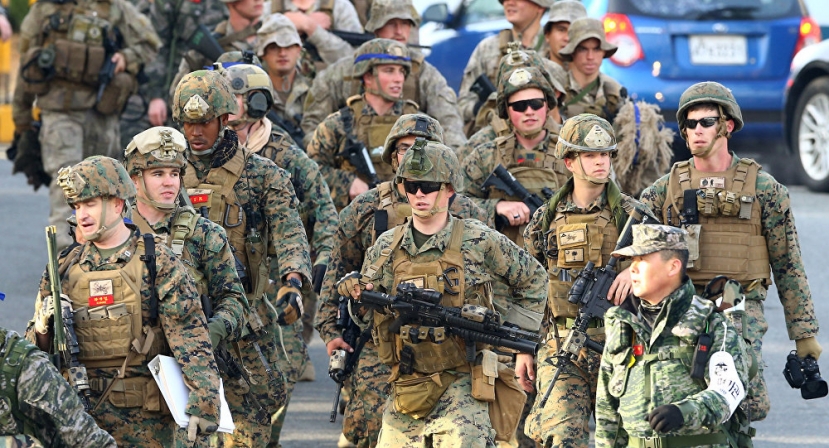The New York Times reported that on Wednesday, US military leaders attended a classified exercise in Hawaii to discuss various scenarios that would arise in the opening days of a prospective US invasion of North Korea. The Pentagon stressed that the exercises did not signal that the White House had decided to go to war with North Korea.
The so-called "tabletop exercises," led by Army Chief of Staff Gen. Mark Milley and US Special Operations Commander Gen. Raymond Thomas, estimated that the opening days of the invasion would be catastrophic.
By their calculations, 10,000 US soldiers would be killed or injured in those first few days along with hundreds of thousands of civilians on the Korean Peninsula. "The brutality of this will be beyond the experience of any living soldier," Milley reportedly said during the exercises.
Of course, the US' central fear is that North Korea would respond to an invasion with nuclear retribution. A main subject of conversation was how effective SOCOM and the Army would be at disabling Pyongyang's nuclear sites before any launches. This would involve tunnel warfare due to North Korea's fondness for building their bases underground, something that US forces are not overly experienced in.
North Korea has also stockpiled enormous amounts of conventional arms and has positioned many of them close to the border with South Korea, vowing to use them in a retaliatory strike if they are ever invaded.
Although the claim has attracted controversy, military sources believe that North Korean artillery could quickly barrage Seoul to massive effect. Nearly half the population of South Korea, 25 million people, live in Seoul's metro area.
The exercises also noted that surveillance aircraft from other US commands in Africa and the Middle East would need to be redeployed to the Pacific.
South Korean intelligence estimates that North Korea has stockpiled between 2,700 and 5,000 tons of chemical and biological weapons, including anthrax; nerve gas; weaponized smallpox and cholera strains; and blister, blood and vomiting agents. The International Institute for Strategic Studies estimated in 2011 that North Korea has the third-largest stockpile of such weapons in the world, and they've likely moved up to second since Russia has completely destroyed their own stockpile since then.
The tabletop exercises made particular note of these biochemical weapons, specifically the challenge of evacuating soldiers exposed to or injured by them in hostile territory.
Washington's official stance is still to favor diplomacy, but they have also set a high bar to begin talks with Pyongyang. "Our condition is denuclearization," US State Department spokeswoman Heather Nauert said. "Our policy has not changed. We have talked about this policy since day one of this administration; and that's maximum pressure, but it's also the denuclearization of the Korean Peninsula."
For comparison's sake, 10,000 casualties was also the number of Allied soldiers lost on D-Day, the landing on the beaches of Normandy in June 1944 that was the single largest seaborne invasion in human history.
Only about 1,000 American soldiers were killed or wounded in the Battle of Inchon, the landing operation that signalled the US entry into the first (and, at the time of this writing, only) Korean War.

